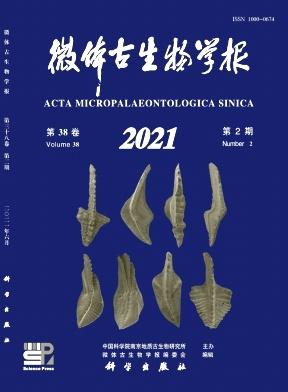Comparative genomic and protein sequence analyses of the chemotaxis system of Azorhizobium caulinodans.
引用次数: 8
Abstract
Objective Azorhizobium caulinodans ORS571 can fix nitrogen not only as a free-living organism and an associative-symbiotic bacterium by colonizing the root surface of non-leguminous plants, but also as a symbiotic bacterium by interacting with leguminous plant Sesbania rostrata. Due to its ability to grow and fix nitrogen under three conditions, A. caulinodans uses sophisticated chemotaxis signal transduction systems to transform environmental cues into corresponding behavioral responses. Chemotaxis appears crucial for the growth of A. caulinodansin complicated environment and the construction of associative relationship with the plant. However, little is known about the chemotactic pathway of A. caulinodans. Thus, our study aimed to compare the chemotaxis-like genes of A. caulinodans with those of well-studied species. Methods NCBI protein BLAST was used for searching sequence similarity with default parameter values against the genomes of A. caulinodans. HMMER3, based on Pfam database, was used for comparative analyses of methyl-accepting chemotaxis protein (MCP). Results There was a major chemotaxis cluster in A. caulinodans and the CheR methylated MCPs independently of pentapeptide motif. There were 43 MCP homologs containing diverse signal-sensing architectures in A. caulinodans. In addition, cytoplasmic domains of these MCPs were all composed of 38 heptad repeats. Conclusion Despite the extremely high homology presented between the chemotactic system of A. caulinodans and those of well-studied species, A. caulinodans shows its own unique characteristics. The classification of these chemotactic pathways by comparative genomics enables us to better understand how A. caulinodansresponds to changes in environment via exquisite signal transductions in chemotaxis system.氮根根瘤菌趋化系统的比较基因组和蛋白质序列分析。
目的研究氮根瘤菌(azorhizobium caulinodans ORS571)既能作为自由生物和结合共生菌在非豆科植物根表面定殖固氮,又能与豆科植物田菁(Sesbania rostrata)相互作用固氮。由于其在三种条件下生长和固定氮的能力,茎叶草利用复杂的趋化信号转导系统将环境线索转化为相应的行为反应。趋化性对花椰菜在复杂环境下的生长和与植物的关联关系的构建起着至关重要的作用。然而,对茎叶草的趋化途径了解甚少。因此,我们的研究旨在比较花青藤的趋化样基因与那些已被充分研究的物种。方法采用sncbi蛋白BLAST方法,以默认参数值对花茎草基因组进行序列相似性搜索。采用基于Pfam数据库的HMMER3对甲基接受趋化蛋白(methylacceptchemotaxis protein, MCP)进行比较分析。结果花青藤中存在一个主要的趋化簇,且CheR甲基化MCPs独立于五肽基序。茎叶草共有43个MCP同源物,包含不同的信号传感结构。此外,这些MCPs的细胞质结构域均由38个七核苷酸重复组成。结论尽管花椰菜的趋化系统与已有研究的花椰菜的趋化系统具有极高的同源性,但花椰菜仍有其独特的特点。通过比较基因组学对这些趋化途径的分类,使我们能够更好地了解花青树如何通过趋化系统中精细的信号转导来响应环境的变化。
本文章由计算机程序翻译,如有差异,请以英文原文为准。
求助全文
约1分钟内获得全文
求助全文

 求助内容:
求助内容: 应助结果提醒方式:
应助结果提醒方式:


